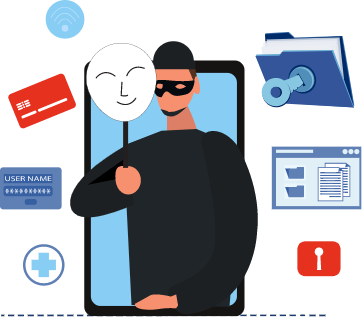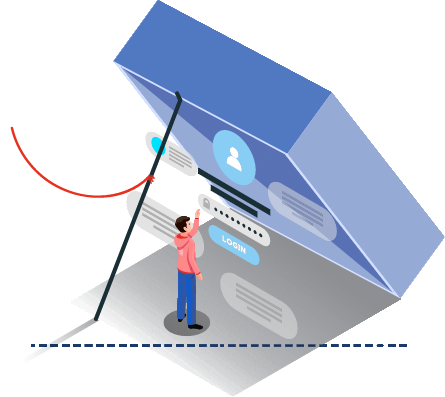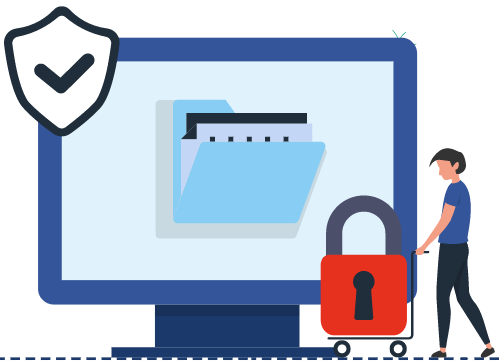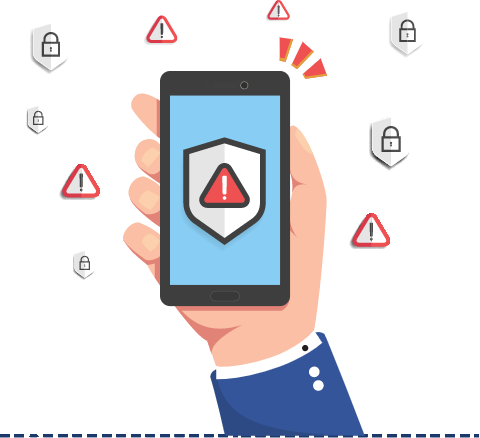
Identity Theft Explained
What is identity theft?
 Identity theft is when someone steals your personal information and uses it without your permission to take your money, open credit accounts, file tax returns, make health insurance claims, and more without your consent.
Identity theft is when someone steals your personal information and uses it without your permission to take your money, open credit accounts, file tax returns, make health insurance claims, and more without your consent.
Are there other forms of identity theft?

Identity theft has many facets and can get complex. In typical instances, someone steals personal information such as a birth date and social security number and uses it to create a new account, make purchases, or commit other fraud.
It can also involve the thief stealing your social security number and attaching it to falsified information such as a fake name, address, and birth date to create a fake identity. This is called Synthetic Identity Theft.
Unlike typical identity theft, it can be harder to detect as thieves often choose people who are less likely to check their credit reports, such as older people, children, and young adults. Frequently, synthetic identity thieves spend years constructing the counterfeit identity, using it responsibly, and establishing a long credit history before they use it for a more significant fraudulent transaction, such as buying a home. This makes it difficult for financial institutions to catch them as they often do not have the proper filters in place, so the thieves slip through the cracks undetected.
This highlights the importance of checking your credit report regularly for aliases and inaccuracies and monitoring your accounts for alerts through your IDSeal membership.
Why is identity theft so common now?

Identity theft has existed for a long time, even before the internet. Back then, it was pretending to be someone else to get a loan or maybe getting married under someone else’s name. But now, identity theft has become sneakier and more common since moving online. Cyber hacking and data breaches have increased exponentially over the past decade, especially since the birth of AI, which means no information stored in an online database is entirely safe.
For instance, in 2023, there was a surge in synthetic identity theft cases, where scammers used real and fabricated information to create new identities. These synthetic identities were then used to apply for loans, open credit cards, and make purchases, leaving victims grappling with financial chaos. Additionally, reports from the US Federal Trade Commission (FTC) revealed a staggering 1.7 million complaints about identity theft and fraud in 2022, highlighting how common these crimes are.
From hackers infiltrating databases to phishing scams tricking individuals into divulging personal information online, the landscape of identity theft continues to evolve, posing significant challenges for individuals and businesses alike.
How does identity theft affect our society?
 The economic toll of identity theft in the United States is significant and growing. In 2023, Federal Trade Commission (FTC) reports of identity theft surged to 3.8 million, marking a notable increase from the figures recorded in 2022.
The economic toll of identity theft in the United States is significant and growing. In 2023, Federal Trade Commission (FTC) reports of identity theft surged to 3.8 million, marking a notable increase from the figures recorded in 2022.
This rise isn't merely a statistic; it underscores a deep economic strain. The costs attributable to identity theft—spanning direct losses to individuals and businesses and indirect expenses such as increased insurance premiums and heightened security measures—are estimated to surpass several billion dollars yearly. This consistent year-over-year escalation highlights the pressing need for effective solutions and preventive measures to mitigate this pervasive issue's economic and personal impacts.
The consequences of identity theft go beyond financial loss. It can also cause emotional distress and feelings of betrayal, leaving victims feeling helpless and stranded without a clear path to recovery. This can also impact society, as people become more anxious about shopping online or trying new financial institutions.
Businesses, especially those in the financial sector, are also significantly impacted by identity theft. They lose money through bad loans and must spend considerable dollars trying to keep their customer's data safe and regain their trust. This can involve implementing more robust security measures, hiring cybersecurity experts, and investing in new technologies. However, even with these measures in place, businesses are still vulnerable to hacking and data breaches involving your personal information. Because of this, subscribing to an identity theft protection service is becoming a standard practice for many Americans.
IDSeal provides comprehensive identity theft protection, including dark web monitoring, credit monitoring, and 24/7 restoration services if you’ve been compromised. For more complete protection, protect your devices with software to keep your digital information more private and secure. Every IDSeal membership comes with IDSeal Pro-Tec®, a 16-feature app that can be downloaded to your favorite online devices1.

Prevention & protection

Today, nearly all our information is online, including the most sensitive personal details shared with hospitals, doctors’ offices, financial institutions, and other places where money is exchanged or services are provided. While no one can completely prevent identity theft, you can take prevention measures to identify potential fraud before it becomes a significant problem:
![]() Monitor your credit report and score. IDSeal offers memberships with reports and scores, gathering information from all three major credit bureaus so you can effectively track your activity. If you see a sudden drop, it could mean something is wrong. Watch for accounts you don’t recognize or remember opening.
Monitor your credit report and score. IDSeal offers memberships with reports and scores, gathering information from all three major credit bureaus so you can effectively track your activity. If you see a sudden drop, it could mean something is wrong. Watch for accounts you don’t recognize or remember opening.
![]() Look at your financial statements and bills. Scan through your statements for bank and credit transactions to be sure you recognize each one. If you get a bill or statement for a strange account, or for a service you didn’t receive, it could be identity theft.
Look at your financial statements and bills. Scan through your statements for bank and credit transactions to be sure you recognize each one. If you get a bill or statement for a strange account, or for a service you didn’t receive, it could be identity theft.
![]() Check your mail or email for data breach notifications. If a company that has your personal information has been involved in a data breach, you should receive a letter or email from the company informing you about it.
Check your mail or email for data breach notifications. If a company that has your personal information has been involved in a data breach, you should receive a letter or email from the company informing you about it.
![]() Watch your text messages for phishing attempts and spam. Scammers often use email and text messages to steal your information. Clicking on a fraudulent link and filling out the forms linked to it can also allow a hacker to gather your personal information.
Watch your text messages for phishing attempts and spam. Scammers often use email and text messages to steal your information. Clicking on a fraudulent link and filling out the forms linked to it can also allow a hacker to gather your personal information.
![]() Don’t open emails you don’t recognize. You may also receive emails from a service or app you don’t recognize asking you to log in. Always check the sender's address. If anything about it looks strange, it could be a fraud. It’s always best to go directly to the company’s website and log in there instead of clicking a link that may take you to a fake website.
Don’t open emails you don’t recognize. You may also receive emails from a service or app you don’t recognize asking you to log in. Always check the sender's address. If anything about it looks strange, it could be a fraud. It’s always best to go directly to the company’s website and log in there instead of clicking a link that may take you to a fake website.
![]() Use a touchless credit card whenever possible. Credit card skimming can occur when a credit card is used at a brick-and-mortar location, such as an ATM or gas pump. Using cards or devices that allow you to tap to make a transaction will help avoid having your card information skimmed by a criminal who’s installed a reading device in the terminal. Protecting your wallet with an RFID blocker will also help prevent a criminal from scanning your card from a nearby location.
Use a touchless credit card whenever possible. Credit card skimming can occur when a credit card is used at a brick-and-mortar location, such as an ATM or gas pump. Using cards or devices that allow you to tap to make a transaction will help avoid having your card information skimmed by a criminal who’s installed a reading device in the terminal. Protecting your wallet with an RFID blocker will also help prevent a criminal from scanning your card from a nearby location.

If you have even the slightest suspicion that you’re a victim of identity theft, limiting the potential damage is the most important thing to do: file a police report, freeze your credit, set up fraud alerts, and contact your bank or credit card issuers. Remember, identity theft is a crime. While law enforcement may not be able to do much, once your report is taken, they can be alert for suspicious behavior involving your name, address, and other pertinent information. Your diligence can pay off, and you’ll be better positioned to catch the identity thief to minimize the damage.
1 Not all features are available on all devices and operating systems.
Start protecting your identity today! Signing up is quick & easy
Remember, 1-in-4 Americans are the victim of identity theft. It's not a matter
of if you'll become a victim, it's when...